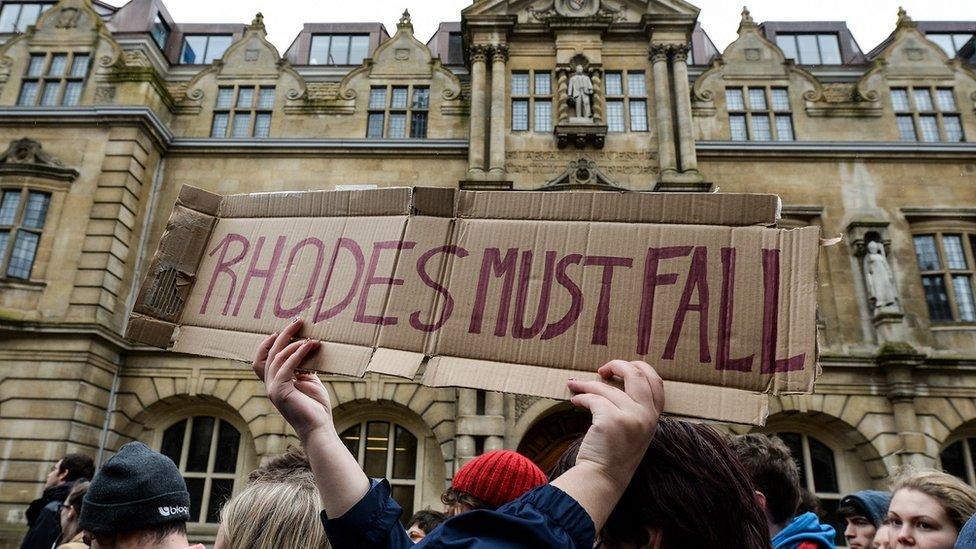Rhodes legacy to be 'contextualised' in exhibition
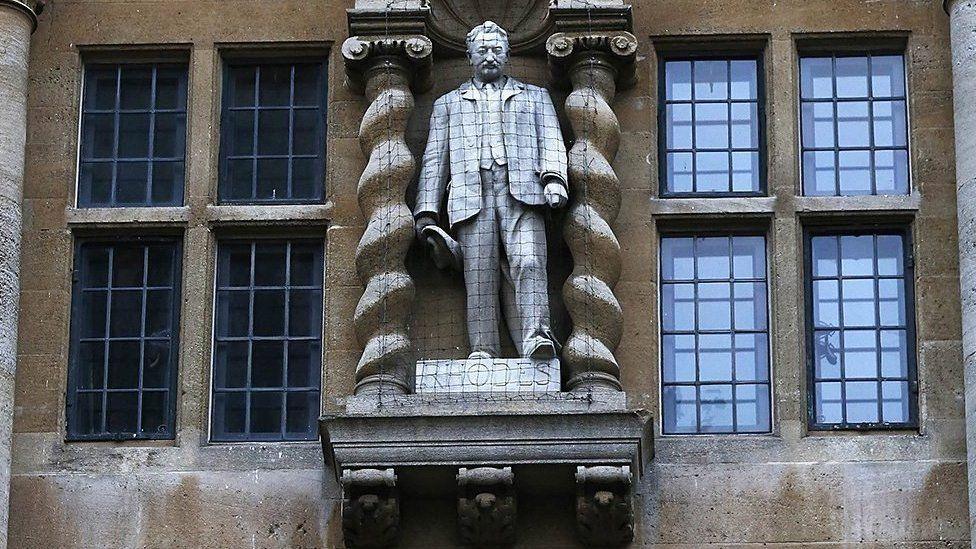
The Cecil Rhodes statue outside Oriel College has sparked protests from the Rhodes Must Fall campaign
- Published
An exhibition aiming to "contextualise" the legacy of imperialist Cecil Rhodes will open at Oriel College, the site of a statue that has sparked years of protests.
Rhodes was a 19th Century politician in southern Africa, who campaigners from the Rhodes Must Fall movement have said was steeped in colonialism and racism.
He was also a student at Oriel and left the college £100,000 when he died in 1902, the equivalent of about £12.5m today.
The exhibition's centrepiece will be the winning sculpture in a competition launched by the Oxford Zimbabwe Arts Partnership (OZAP).

The sculptures are being made at Chitungwiza Arts Centre in Zimbabwe
Lord Mendoza, Oriel College provost, said the exhibition would "not only explore the nuances of the legacy of colonialism but will also bring the art of the people of Zimbabwe to Oriel College, to the University of Oxford, and the UK".
OZAP founder Richard Pantlin called it an "important step forward in creating a partnership that provides educational and cultural benefit".
The arts partnership was formed in response to the Rhodes Must Fall protests, with a view to using Zimbabwean art as a "constructive way forward for historic healing".
'Unimaginable hardships'
The sculptures are being made by artists at Chitungwiza Arts Centre (CAC) in Zimbabwe.
More than 100 artists registered to take part, with a judging panel deciding the winner in March.
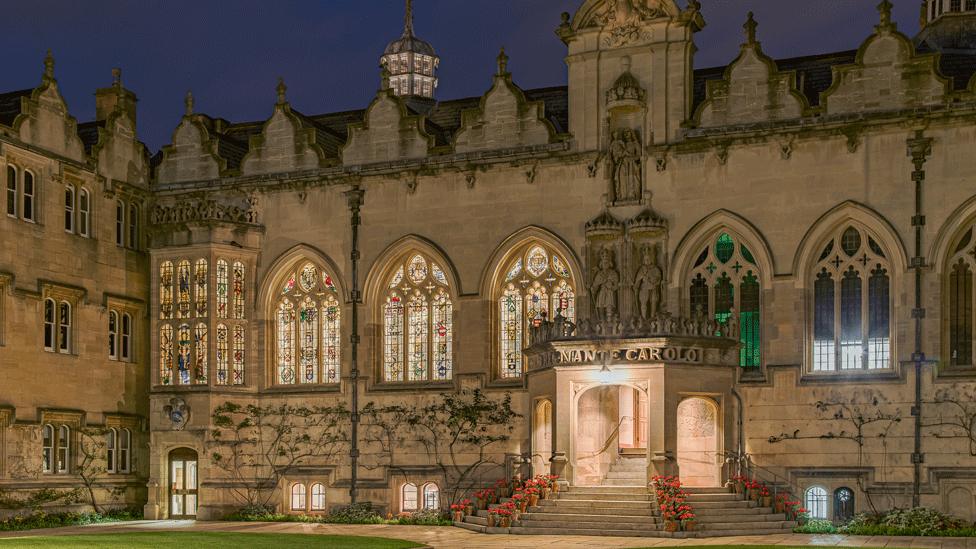
Rhodes was a student at Oriel and left the college part of his wealth when he died
CAC chairman Tendai Gwarazava, said: "The sculpture should symbolize the strength and courage of our ancestors, who despite facing unimaginable hardships, continued to fight for their freedom and dignity.
"It should inspire us to work towards a brighter future, where the people in the world can live in peace, harmony and prosperity."
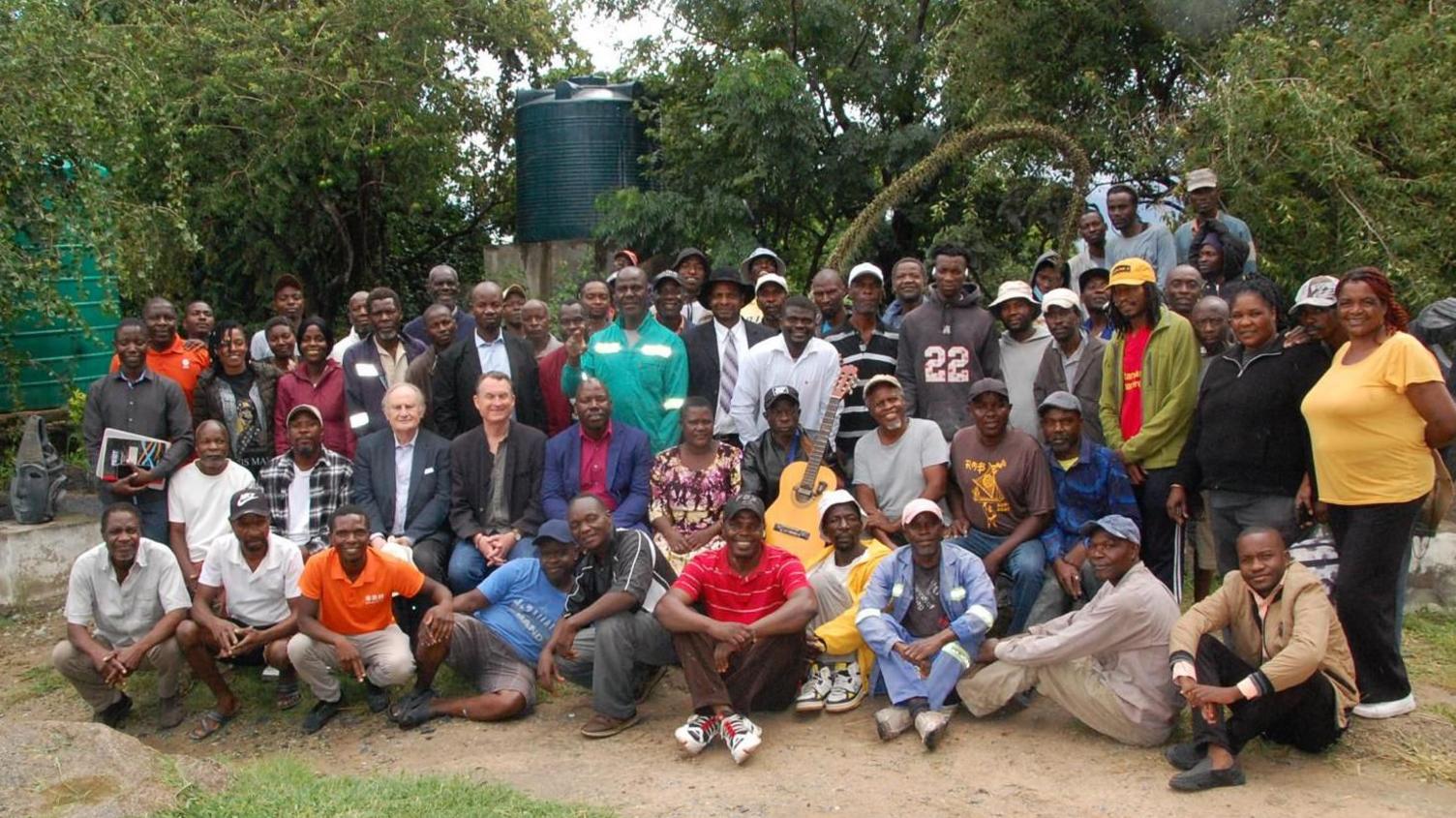
The winner of the competition will be decided in March
Rhodes was a colonialist, businessman and politician who drove the annexation of land in southern Africa in the late 19th Century in Zimbabwe and Zambia, then named Rhodesia.
In 2015 the Rhodes Must Fall campaign began after students in South Africa called for the removal of his statue on the steps of the University of Cape Town, sparking protests at other universities.
Then after the death of George Floyd in 2020, conversations around colonisers like Rhodes came to a head with the decapitation of his statue in South Africa and a number of protests in Oxford.
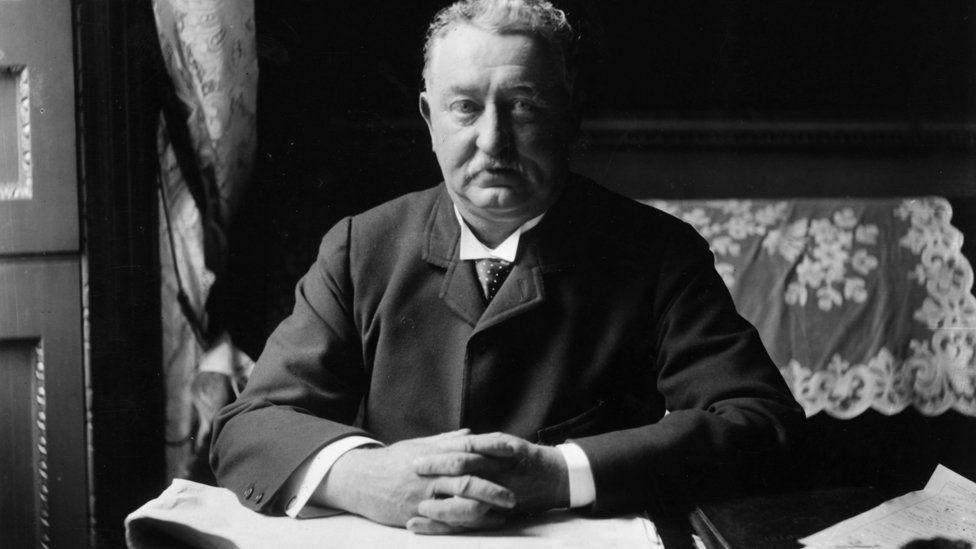
Rhodes drove the annexation of land in southern Africa in Zimbabwe and Zambia, then named Rhodesia
William Beinart, emeritus professor of African History at Oxford University, said: "As a member of the Oriel College Rhodes Commission set up in response to the 2020 Oxford Rhodes Must Fall campaign, I researched more deeply into the wars carried out by the British South Africa Company and was shocked by the extreme violence committed against the Ndebele and Shona peoples."
The exhibition opens at Oriel College in September, before moving to the University Church of St Mary the Virgin until December. It will visit other institutions in 2026.
Get in touch
Do you have a story BBC Oxfordshire should cover?
You can follow BBC Oxfordshire on Facebook, external, X (Twitter), external, or Instagram, external.
Related topics
- Published21 October 2023
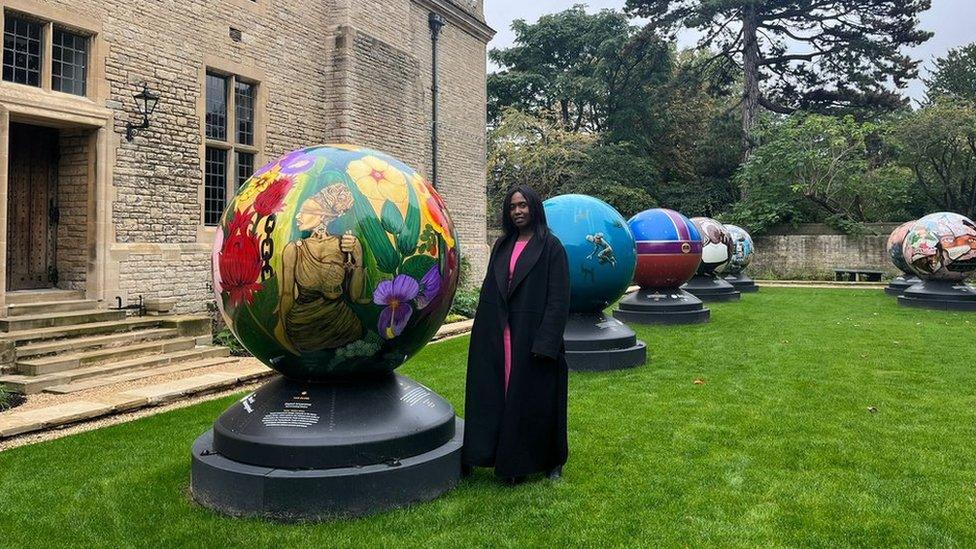
- Published28 July 2022
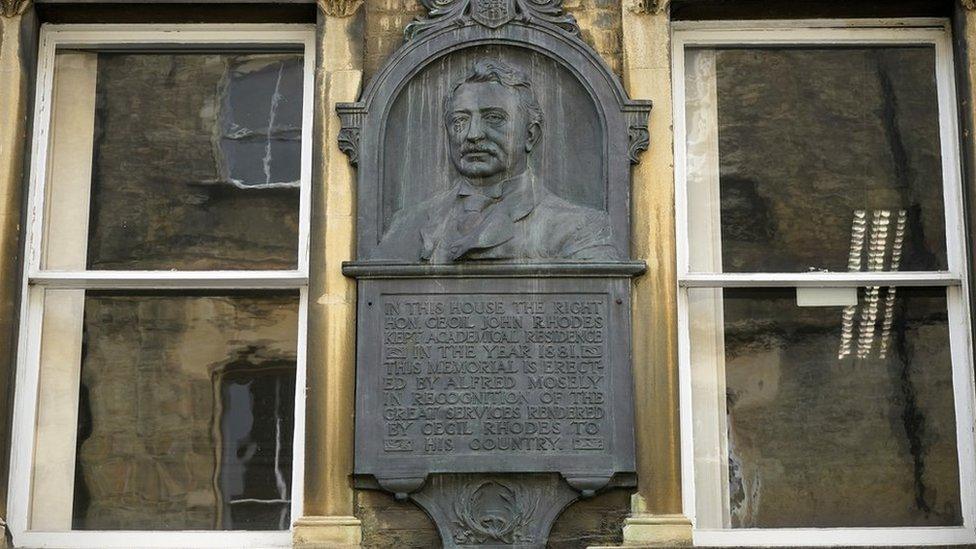
- Published20 May 2021
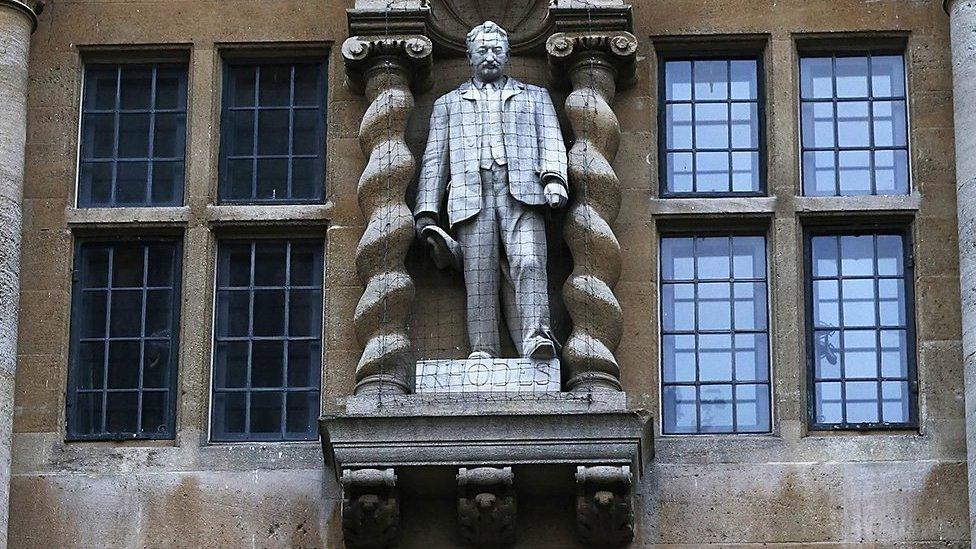
- Published26 June 2020
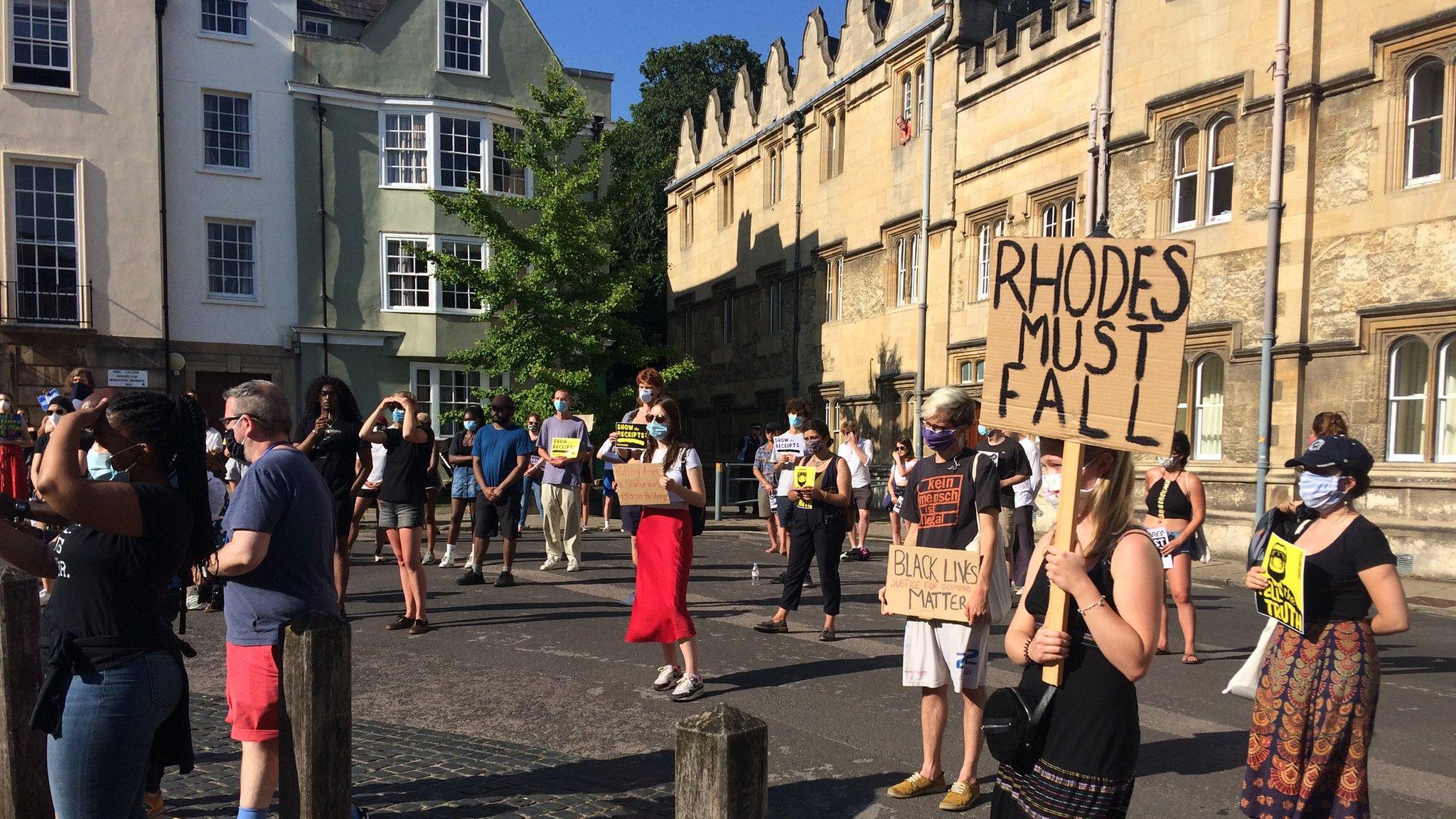
- Published18 June 2020
